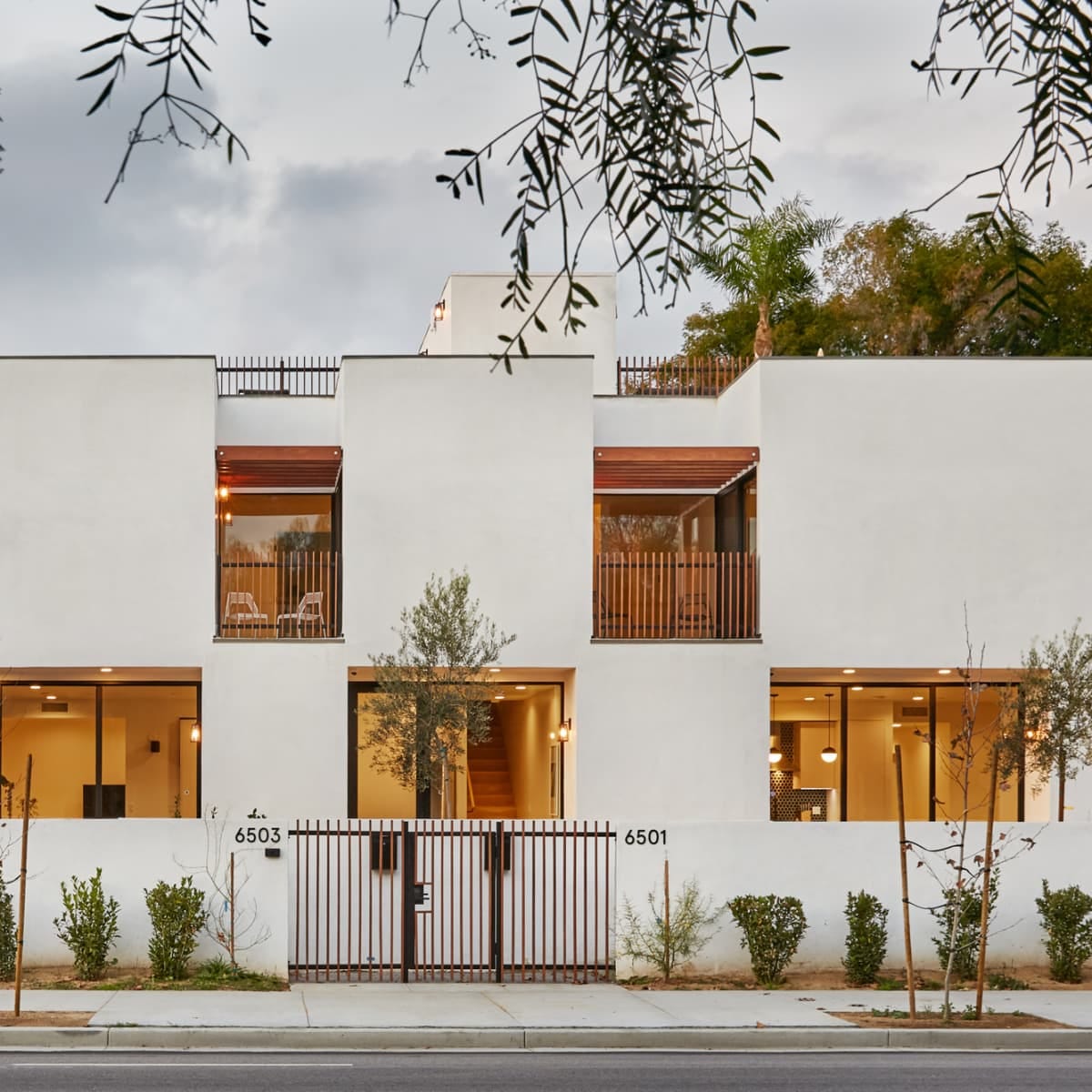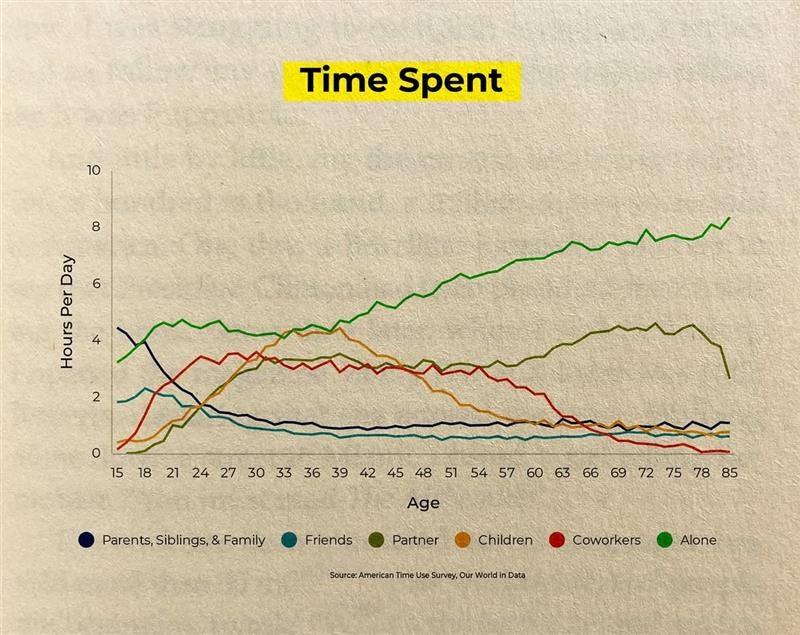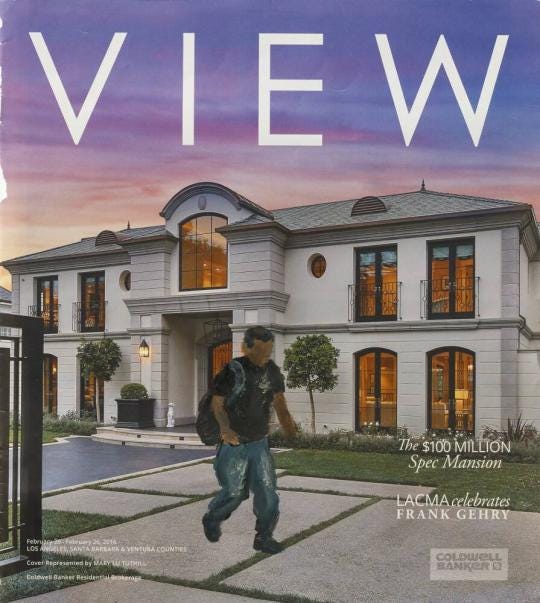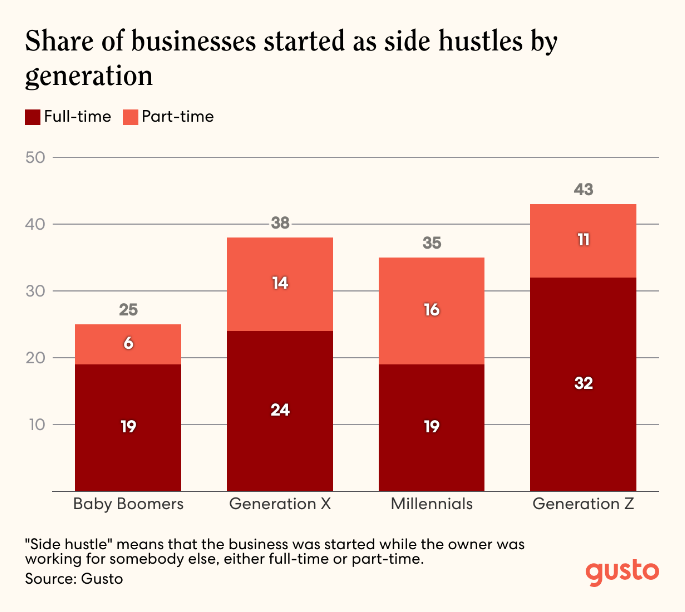This piece is Part II of The History of the Home series. In Part I, “The History of the Home,” we explored how climate change, insurance gridlock, and post-disaster rebuilding are reshaping the physical architecture of American housing.
Here, we widen the lens and examine how homes are being redefined as emotional, economic, and infrastructural centers amid the collapse of caregiving, labor, education, and civic institutions.
The housing market hit a record high in June. Median sale prices passed $435,000. Inventory is tight. Mortgage rates are high. Rebuilding costs are soaring. Earlier this year, California wildfires destroyed over 18,000 structures (most of which were homes), and many families are still waiting on permits or payouts that may never come. In some neighborhoods, homes can’t be insured at all. LA residents aren’t just being priced out of their homes—they’re unable to find affordable rentals in the interim. Despite Governor Newsom and the Attorney General’s attempts to prevent price gouging, rent skyrocketed by 20% across LA County just two weeks after the fires. In surrounding cities, the cost of renting a single-family home surged to staggering levels: Encino (141%), Glendora (150%), Valley Village (198%), Sherman Oaks (266%).
But this feels like more than a housing crisis. This, to us, feels part of a larger reckoning with what homes are being asked to hold—physically, emotionally, and socially. Homes are absorbing more than they were ever built to: more labor, more caregiving, more coordination, more pressure. They’re carrying the weight of retreating institutions: the classroom, the clinic, the workplace, the safety net. Homes have always been multi-purpose, but with civic infrastructure consolidating (and collapsing), many are forced to compensate for what has disappeared in shared public life.
We’re living through a profound shift, equal parts social, economic, and generational. The line between public and private life is dissolving. Schools, religious congregations, recreation centers, eldercare systems, even local governments are contracting or altogether vanishing. In their absence, the home is being redefined. It’s now a hub for caregiving, learning, working, and surviving. This shift is reshaping not just how we live, but what we demand from the spaces we live in.
The home is becoming infrastructure, compensating for the collapse of nearly everything else—at the same time that building generational wealth through homeownership becomes more elusive. We’re no longer just asking for four walls and a roof. We’re asking for resilience, flexibility, connectivity, restoration. Some are asking for refuge. Others, for a reset. And many of us are asking the same daunting question:
Should it really be this hard to feel at home?
A Shift Back Home
Today, more young adults are living with their parents than we’ve seen in a decade. As of 2024, 19.1% of adults aged 25–34 (around 8.5 million people) live with parents or in-laws. In high-cost states like California and New Jersey, that number exceeds 25%. Meanwhile, 17% of homebuyers reported purchasing multigenerational homes in 2024—the highest share in over a decade.
For many, it’s a response to limited housing options, mounting student loans, stagnant wages, and a lack of generational wealth. It’s also a way to support aging parents, raise children with help, and preserve community and tradition in an age of transience. In California, where climate risk and cost of living collide, these pressures are especially acute. After the January wildfires, many families consolidated out of necessity. Insurance has disappeared in high-risk zones. Rebuilding one lot can now cost over $3 million. Even outside disaster areas, shared living is becoming a solution for care, for financial stability, for staying rooted in community.
And this shift isn’t limited to biological families. As of 2022, 36% of Americans live in households with non-relatives, up from 19% in 1970. The number of co-living rooms in the U.S. today is nearly 20% higher than in 2020. Some are co-renting. Others are co-buying. A growing number (15%) have purchased homes with friends, especially among Millennials and Gen Z.

It’s the kind of thing we joke about online, like the meme shared below. But behind this light-hearted internet trend is something evidently real. This is about longing. For witnessed joy, for shared labor, for someone else to make the soup while you vacuum.
Parenting intensifies these dynamics. A recent survey found 96% of U.S. parents feel they’re always "on call," yet average just 31 minutes of personal time daily. More than half say they’re too busy to spend meaningful time with their children. That pressure is drawing multiple families together, because evidently, many two-parent households can do it alone.
This extends beyond shrinking square footage or rising rent, and requires a conversation about the emotional infrastructure of living. The resurgence of cohabitation is happening not simply because the economy demands it, but because loneliness is hollowing us out.
Many of today’s parents were once "latchkey kids"—growing up in the ‘70s, ‘80s, and ‘90s, coming home to empty houses and frozen dinners. It taught independence, but also disconnection. Now, in an era of institutional fragility, many are trying to build something different: households of presence, shared responsibilities, shared meals, shared meaning.
This longing is reflected in how we spend our time. The way we spend our time is changing. As the graph below show, time spent with friends plummets after our early twenties. At the same time, our days become crowded with caregiving, coworkers, and eventually, solitude.
The takeaway here is that we aren’t just lonely, we’re overstretched. Short on time. Short on money. Short on space. Always on. The boundary between home and labor is dissolving, and it’s taking our bandwidth with it.
Labor at Home
The American workforce is shifting, and so are the boundaries between home and labor. The home has become both refuge and workplace. Both a sanctuary and a site of strain. Essential workers—firefighters, delivery drivers, HVAC techs—keep the country running, but many can’t afford to live in the communities they serve. Teachers, nurses, housekeepers, and eldercare aides—once middle-class anchors—are overworked, underpaid, and stretched thin by the rising cost of living.
In parallel, another wave is cresting: a quiet but accelerating displacement of labor across logistics, administrative, customer support, and creative sectors. As automation and AI redefine workflows, many workers aren’t fully unemployed—they’re underplaced. Phased out of stable roles by systems they didn’t build and can’t outperform, they find themselves stuck between outdated skill sets and rapidly shifting demands. It’s not just a skills gap—it’s a pacing gap. And in labor markets shaped by speed and scale, there’s little room to catch up.
Reskilling programs and vocational education are trying to keep pace, but access is patchy, and funding is thin. The AI wave is moving faster than the systems designed to absorb its impact. In its wake is a growing class of “ghost collar” workers—highly dependent on unstable digital piecework or informal jobs, doing invisible labor for companies and infrastructures they’ll never touch.
Many of these workers are in the Global South, where companies like OpenAI and Scale AI outsource the training of billion-dollar models to low-wage labor. While job postings for AI-related tasks have surged in developing countries, workers in Kenya, India, and the Philippines often earn just $1–$3 per hour labeling datasets or moderating content. These roles are foundational to the systems powering Silicon Valley’s fortunes, yet the humans behind them remain hidden—flattened into API outputs and invisible infrastructure.
Even for the essential workers here in the U.S.—the firefighters, construction crews, HVAC techs—the cost isn’t just economic. It’s environmental. The AI boom is driving a data center construction wave, often concentrated in vulnerable communities. These facilities emit staggering levels of CO₂, consume millions of gallons of water daily, and run on diesel generators that produce industrial-grade pollution.
In places like Memphis’s Boxtown, historically Black neighborhoods now face heightened cancer risks from unregulated gas turbines. In Northern Virginia’s Prince William County—home to over 85 million square feet of data centers—construction crews face core body temperatures exceeding 100°F while building them, then return home to higher utility bills and chronic noise. In a cruel irony, the same workers building and maintaining the AI future are priced out of the communities they power—and disproportionately burdened by its externalities.
Some tech-enabled housing solutions aim to soften the blow. BILT Rewards offers mortgage points and down payment assistance; Foyer creates “401(k)s for homeownership” through interest-bearing savings and employer-style matches; Truehold allows aging homeowners to sell equity while staying in place; Bonus Homes lets sellers retain partial upside post-sale. On the surface, these models promise liquidity, flexibility, and a new path to ownership.
But zoom out, and their limitations become clear. BILT’s down payment savings barely touch the $145,000 affordability gap between median income and home prices. Truehold and Bonus only serve current homeowners. Foyer’s 15,000 users represent a fraction of the 50 million renters still shut out of ownership altogether.
Most of these tools treat housing as an individual achievement, not a collective necessity. They’re optimized for users who already have assets or access. Meanwhile, the AI-driven disruption that’s pushing people out of work—and out of housing—is accelerating. And the few environmental solutions in the pipeline (timber-framed data centers, immersion cooling, waste heat capture) remain marginal compared to the scale of the problem.
The result is a compounding crisis: labor that can’t sustain the cost of living, jobs that don’t anchor communities, homes that are out of reach—and innovation that, for all its promise, hasn’t yet learned to build for everyone.
The Care Economy Comes Home
As the population ages and birthrates decline, our care infrastructure is fraying. More Americans are living longer—but not necessarily healthier. Many struggle to navigate the benefits they qualify for. Eldercare facilities are overburdened, expensive, not fully covered by Medicare or Medicaid, and increasingly distrusted. Meanwhile, the traditional model of family caregiving is buckling under pressure.
According to research from The Holding Co., 80% of caregivers report regular out-of-pocket expenses for a loved one—averaging $7,242 annually. Many adult children are working two jobs, raising children of their own, and living far from aging parents. They’re short on time, money, and proximity.
The result: care is coming home, and it’s getting a digital upgrade.
Domestic care now spans two major categories: household management ($122B) and home-based medical and personal care ($151B). Given the number of people caregivers support, even low-income households making less than $25K annually are willing to pay up to $50 if it saves them just one hour of labor.
Startups like UrbanSitter help parents find trusted nannies, tutors, elder companions, and housekeepers. Meanwhile, AI copilots like Ohai, Milo, and Duckbill are emerging as digital household managers—triaging everything from doctor’s appointments to school newsletters, summer camp signups, bill payments, and prescription refills. These tools aren’t just about efficiency—they’re about bandwidth. They give families back time they don’t have.
For those caring for aging relatives, publicly funded programs like PACE (Program of All-Inclusive Care for the Elderly) offer a proven model: combining medical care, meals, transportation, and social support under one roof. Think adult daycare meets hospital—with an emphasis on dignity and continuity. Startups like Seen Health and Habitat Health are helping scale this model with impressive results:
44% lower hospitalization rates compared to Medicaid nursing home residents
33% higher life expectancy than other community-based care programs
95% of caregivers would recommend PACE
58% of caregivers who initially reported high burden saw significant relief
80% of PACE enrollees with depression showed improvement within 9 months
$9,000–$12,000 in annual Medicaid savings per participant compared to nursing homes
But even PACE isn’t immune to headwinds. Proposed federal Medicaid cuts (~$800B over the next 10 years) will impact the majority of PACE members. Given that the majority of them are dual eligible, these cuts will likely make it challenging for them to access to the wraparound benefits. As a result, states could new slow down new PACE center approvals, freeze enrollments, cut staff and services, and cause outright closures.
In the absence of structural support, a fragmented patchwork is emerging:
Telehealth check-ins
Value-based care services like Sprinter Health
Insurance and benefits monitoring
AI-powered health tracking
Home equity tools that help aging adults cover caregiving, repairs, or property taxes
What’s emerging is a patchwork of hybrid solutions: tech-enabled care platforms with telehealth check-ins, value-based care platforms like Sprinter Health, benefits and insurance monitoring, AI-powered health monitoring, and home equity offerings an additional source of income for aging folks to use toward maintenance, repairs/modifications, property taxes, and at home caregiver support.
This ecosystem sits atop a caregiver workforce still largely underpaid—but slowly gaining visibility. Companies like Givers and Aidaly now offer compensation pathways for informal caregivers, reframing unpaid labor as vital infrastructure.
The home is no longer just a private residence. It’s becoming a distributed care hub—one part hospital, one part help desk, one part community center. And it’s being stitched together by necessity, ingenuity, and the invisible labor of millions.
The Rise of Choice Economies
Traditional schooling is also in flux, and moving inwards into the home. Since the pandemic, over 1.2 million students have left public school systems. The reasons vary—remote work flexibility, curriculum concerns, mental health, safety—but the outcome is clear: the rise of micro-schools, homeschool pods, and co-learning models.
This “choice economy” is reshaping not just where kids learn, but how education is accessed. Families are opting out of large, standardized systems and building bespoke ecosystems of tutors, tools, and co-ops. It’s more flexible, sometimes more affordable—but also fragmented, inequitable, and hard to regulate. The wealthy are especially policing their children’s technology use to they have an extremely personalized, analog learning journey that literally involves them touching grass and forces them to be bored to spark creative ideas.
Many are even opting out of college entirely, with freshman enrollment dropping over 5% in 2024 (largest drop since 2020) and an overall 10% enrollment decline from 2010 to 2023. From a YPulse survey conducted in 2023, only 85% of high school students planned on attending college compared to 100% pre-pandemic. They’re trading in diplomas for construction/mechanic/landscaping/cleaning type jobs and eventually owning those businesses to get on track to become what Codie Sanchez would call becoming a “Main Street Millionaire.” Over one-third (37%) of Gen Z business owners serve as their family's sole breadwinner, versus 28% of Millennial entrepreneurs, who more often have spouses or committed partners contributing to household earnings. Those side hustles include content creation. 65% of Gen Z American adding the label of “video content creator” to their bylines. With the endless content on how to become a content creator and surge of VC-backed AI content creation tools, it’s never been more appealing and accessible to become a creator and monetize yourself.
Still, the underlying theme is familiar: institutions are being replaced by networks. And once again, the home is the anchor.
Automation, AI, and the Next Domestic Frontier
Meanwhile, the future of domestic life is being reimagined—by machines. AI is already embedded in many homes: thermostats that learn your rhythms, cameras that recognize faces, cleaning robots that run while you sleep. But that’s just the beginning.
Startups are building eldercare robots, emotionally intelligent companions, AI therapists and doctors, and household assistants that can cook, clean, and help with mobility. As the technology advances, we’ll have to reckon with real tradeoffs: efficiency vs. empathy, convenience vs. care. What tasks can be automated—and what happens when even companionship becomes programmable?
VCs and AI operators alike are bullish on supplementing and sometimes replacing romantic partners, friendships, co-workers, teachers, personal trainers, coaches, therapists, and doctors. As we witness the death of social media, the foundation for an agentic social network is being "packaged as an operating system for relationships” according to Patron’s Partner, Amber Atherton, who built a YC-backed startup that created private communities for brands and eventually was acquired by Discord. The techno-optimists are predicting that AI (not the people in our village) will be the infrastructure of our life.
Many people I speak to, though, particularly those who prioritised other bonds earlier in their life, would love to have more friends than they do. That need won’t be assuaged by the introduction of whatever pale facsimile of friendship that AI may offer. Who would want a friend that can’t shout with joy when they lay eyes on you? For whom pleasure and revelation and surprise are only concepts? The friendships that have defined my life have taught me this: a friend you can’t give back to is not a friend at all.
—Megan Nolan, “My friendships are my life. AI could never compete”
It’s tempting to dream of a home that runs itself. But the deeper question is: what kind of home are we building if it doesn’t require us to care for one another anymore?
Rethinking Home as Infrastructure
This is not just a story about housing. It’s a story about the reshuffling of American life. When institutions pull back, homes step in. But maybe homes were never designed to carry this much.
And yet, here we are. Living, learning, working, aging, grieving, birthing, and rebuilding under one roof.
If the 20th century gave us the nuclear household, the 21st may give us something more fluid, more intentional. More interdependent. More human.
To get there, we’ll need new zoning policies, new financing models, and new cultural scripts. But we’ll also need something older: shared meals, open doors, and the belief that a home can hold more than just people. Purpose, maybe; care for one another, maybe.
Brianna’s Note:
In 1956, artist Richard Hamilton posed the question “what do we place at the center of ‘home,’ and why?” through collage: Just what is it that makes today’s homes so different, so appealing? His pop-art piece stitched together mid-century domestic fantasies—TV, vacuum cleaner, canned ham, bodybuilder, moonlit globe—clipped from American magazines and arranged into a surreal living room. It was satire, yes, but also a signal: the home as showroom, as symbol, as stage for postwar aspiration. A domestic sphere curated and commodified.
Decades later, Home—So Different, So Appealing picked up that thread. Curated by Chon A. Noriega and others in 2017–18, the exhibition featured over 100 works by Latin American artists. It reframed the home not as a static structure, but as a living site—of memory, migration, labor, and exclusion. Noriega described the show as “not just about architecture,” but about the power structures that determine who belongs—and who doesn’t.
That show lives in my home now. One of my dearest friends and artist, Matt Nadel, gifted me the exhibition book after we visited the MFA Houston together and discovered Jay Lynn Gomez’s work and her meditations on the people who make and maintain domestic life but often live outside its frames. I have copies of a few of her pieces hanging in my home today. They remind me that home is never just a container. It’s a mirror, and a boundary. A place shaped not only by what’s inside, but by who has been kept out.
That’s the thread running through this piece, too. What makes today’s homes “different, appealing” (and increasingly fragile) isn’t just their design. It’s what lives inside them: the labor, the caregiving, the invisible scaffolding of emotional and economic survival. Just as Hamilton’s collage spotlighted domestic consumption, and Noriega’s curation revealed domestic erasure, the question now becomes:
Who is shaping the home today? Who is visible within it—and who has been left behind? What do our homes reveal about the systems we’re inheriting, resisting, and rebuilding?
That’s why we’ve woven pieces from Home—So Different, So Appealing throughout this essay. These works expand the conversation beyond data and policy, reminding us that the story of the home is also a story of power, memory, and care.
Sri’s Note:
Homes are museums filled with historical artifacts of our past, present, and future family.
Growing up in an Indian-Hindu household, everything about our living quarters whether a condo or house was sacred. Whenever we moved into a new condo or house, we performed a Griha Pravesh (housewarming ceremony) with the assistance of a guru. For us a home isn’t just a piece of property it's an extension of us and the first entrance into the physical world.
A part of the pooja I always lead was boiling milk on the stove. Once the milk overflowed, I would add rice to it and my mom would finish making paramannam (rice pudding) to serve as prasadam for God and anyone that was invited to the pooja. You’re probably asking why the first act as a homeowner would be so inherently domestic, feminine, and completed with milk. The overflow of milk is a reenactment of Goddess Lakshmi’s passage to becoming immortal. It symbolizes an abundance of happiness, wealth, prosperity, health, peace, and love for anyone who enters.
I always grappled with my personal connection to God, but as I’ve gotten older I’ve become very prideful about my culture because it was so visible. You always knew it was a Hindu household just based on how the exterior was adorned and the inclusion of a Tulsi plant (think of it as a proxy mother protecting the house) in the backyard. My mom would typically “draw” a muggu (decorative motifs that help summon Goddess Lakshmi into one’s home) where a welcome mat would be placed. During Diwali, my mom would place diyas on our porch, outside the garage, in the backyard, and in the doorway of various rooms. During Ugadii (the Telugu new year), my dad would hang banana leaves at the top of our front door and occasionally place garlands on either side of the door.
To this day, I still don’t fully understand the significance of each of these rituals. But all of these practices and traditions were ways to manifest community. A community that is continuously shaped by how much you choose to nourish yourself and your home. A home will never discriminate. If you and your family mark it with parts of your souls, it will connect those parts with hundreds of thousands of others. We’re astonished by the number of people that visit each of the seven wonders of the world, why aren’t we astonished by the number that visit our homes? More importantly, why don’t we measure how rich we are based on the number of times our village members visit our home? Not for fancy dinner parties or the holidays but for deeply mundane and routine activities. The former and the latter breed role-playing and performance within your family and amongst external guests, making the home a stage with countless plays all of which are composed of past, present, and future versions of selves. There’s so many roles my family, friends, and I continue to play so we can eventually have our breakout role with our breakout moment. I want to believe that “my home” is my spiritual epicenter but I don’t know how or when it will?
“I don’t really know what ‘authentic’ means. When you take away all of the role-playing, all of the performance, what is left? I don’t know if that’s your authentic self, or if it’s a profoundly raw, destabilized, possibly non-functioning self.”
—Katie Kitamura, Audition











